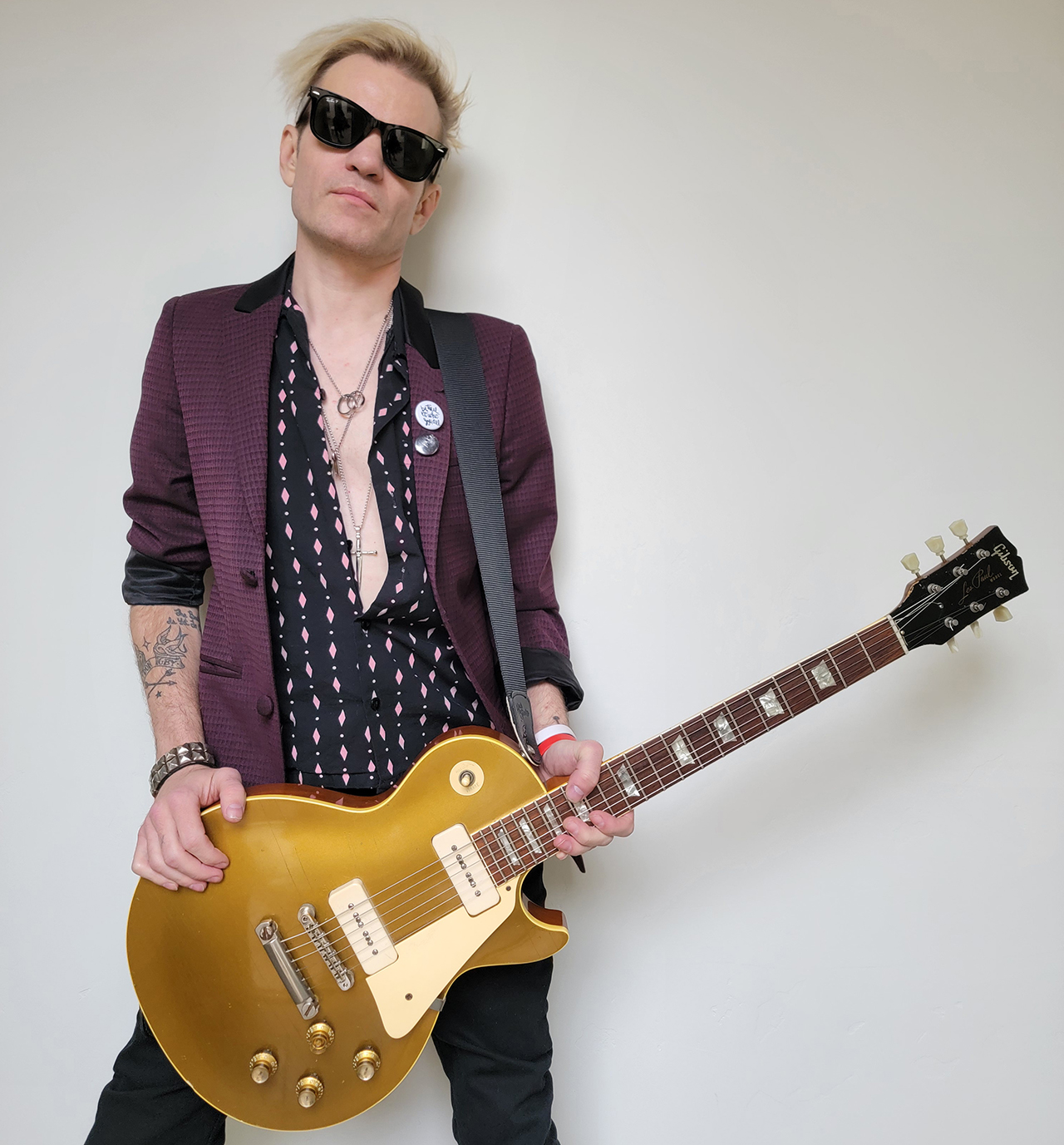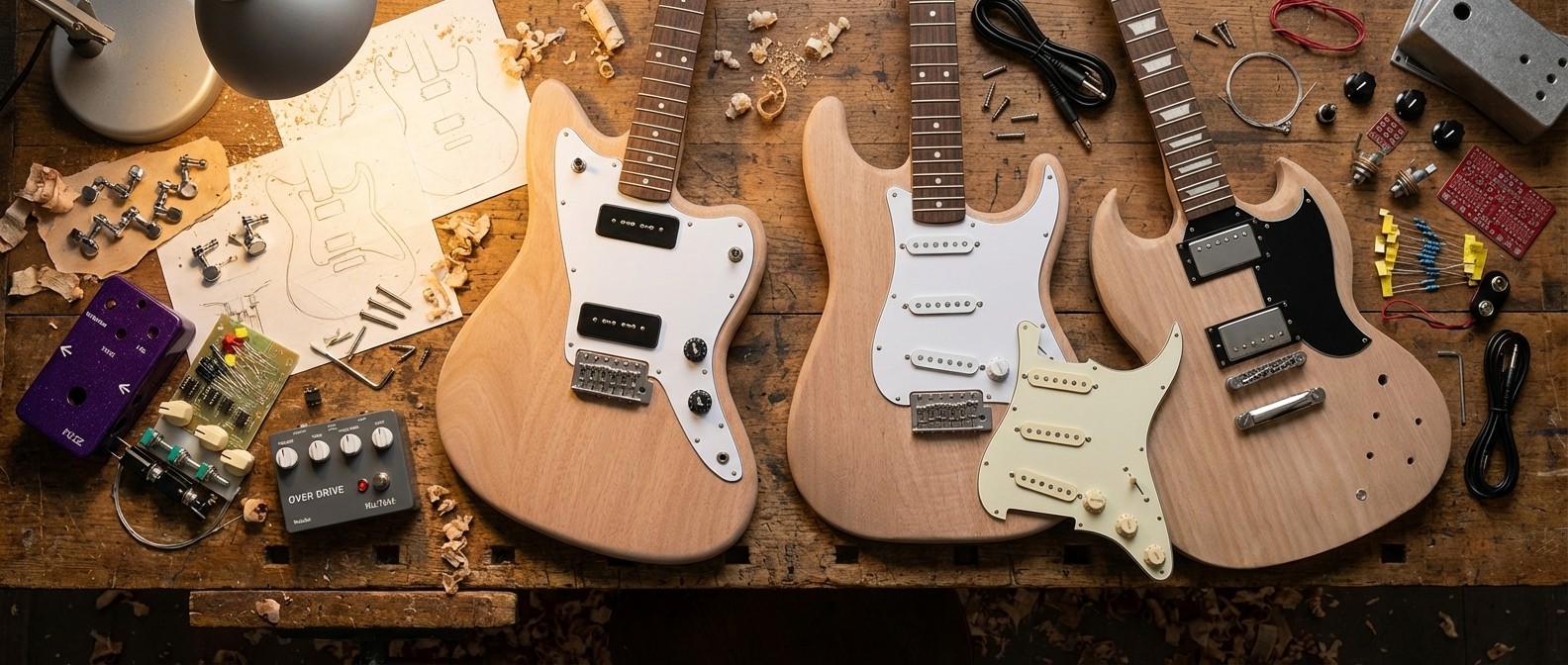“I couldn’t even walk, but I thought, ‘At least I can play guitar!’ When I picked one up, I just couldn’t. That was the final straw”: Deryck Whibley had to rebuild Sum 41 after nearly dying – so why is he ready to break up the band?
As Sum 41 release their final album, the pop-punk icons’ frontman explains why he knew it was time to call it quits – but not before he bought the ’68 Les Paul featured on the album that inspired him to play in the first place

If there’s anything that sits chief among every guitarist’s list of deepest and darkest fears, it’s the thought of not being able to pick up their favorite instrument ever again. Sum 41 singer/guitarist Deryck Whibley experienced this living nightmare back in 2014, after being hospitalized with severe kidney and liver damage as a direct consequence of alcohol addiction.
He was told in no uncertain terms that one more drink could be fatal, which prompted him to decide enough was enough. He knew he had plenty of music left in him. There was just one problem: he didn’t have the strength to hold a guitar, let alone play one.
“That was the scariest thing I’ve ever been through,” he tells Guitar World a decade later, having overcome his demons and left his decadent days behind him. “The mental aspect was the hardest. I finally got home from hospital feeling rough – I couldn’t even walk, but I thought, ‘At least I can play guitar!’
“When I picked one up, I just couldn’t. That was the final straw. My life was bad enough, but not being able to shape my fingers into a chord... that’s when it hit me.”
Of course, a six-string love affair is not the kind of thing you easily give up. Whibley persisted, moving one finger at a time. Some things came back quicker than others, he admits, but the struggle itself was similar to a complete beginner trying to learn the basics one step at a time. Naturally, the whole situation was quite maddening.
“Trying to change from a basic A chord to a G was very slow,” he says. “I’d be changing one finger at a time before I even got to the strumming. Then I’d struggle to hold a simple C chord.”
What made matters worse was the realization that being in this mess was nobody’s fault but his own. “I’d sit there and think I’d lost it all. And then it would dawn on me: I hadn‘t lost anything – I’d thrown it all away through how I was living. I had to focus on getting back in shape, mentally, physically, creatively.”
All the latest guitar news, interviews, lessons, reviews, deals and more, direct to your inbox!
Which is precisely what Whibley and Sum 41 did, returning in 2016 with sixth album 13 Voices and a new line-up comprising of a three-pronged six-string attack: Whibley, new recruit Tom Thacker and returning original member Dave Baksh.
Another record, Order In Decline, followed in 2019, and their eighth full-length Heaven :x: Hell is set to arrive at the end of March. There’s a big difference this time round, however: it will be their final album cycle as a band.
“I guess I’ve been thinking about it for a while,” reveals Whibley, who endured yet another brush with death after Covid-19 left him with pneumonia and at risk of heart failure last year.
“I’ve been in this band since 10th grade. It’s all I’ve ever done and all I think about from the second I wake up to when I go to sleep. It’s a constant thing that never goes away. Even after a long tour I’d tell myself, ‘I’m gonna do something different,’ and it never happened.
“I’d end up wondering ‘Will I ever leave this band? Is there more? Do I have other ideas to explore?’ and then continue to bury those thoughts.”

Make no mistake: Whibley is proud of Sum 41’s accomplishments – and it’s the strength of this final record that’s given him the courage and conviction to finally follow through on his unshakeable musings.
He’s achieved what he set out to do and now’s the time for new challenges because you only get one shot at life; and some might say he’s already on his third.
I’m 1,000 percent focused on Sum 41 from now until next year... and then I gotta figure something out
“I decided for sure when the record was finished,” he reveals. “It felt like the best musical idea we’ve had. It’s a double album which encapsulates the entire sound of Sum 41 from beginning to end. I love all the songs. This is the record to go out on! I can hang my hat on this record and feel ready for something else.”
With the new release and impending world tour filling up his diary for at least another year, however, don’t expect to hear from him under a new guise anytime soon.
“I definitely don’t want to retire and stay at home doing nothing,” he laughs. “I’m ready for something different. I don’t even know what it is yet. I’ve got a lot of ideas, but I’m 1,000 percent focused on Sum 41 from now until next year... and then I gotta figure something out!”
One thing that we can safely predict of the Canadian musician’s future is the companionship of a newly acquired all-original 1968 Gibson Les Paul Standard Goldtop, via super-producer Michael Beinhorn (of Soundgarden, Ozzy Osbourne, Aerosmith fame).
This particular instrument has a very special meaning to its new owner, given that it was used by Social Distortion guitarist Mike Ness extensively on their Beinhorn-produced 1996 album White Light, White Heat, White Trash. The album was so important to Whibley as a teenager that he pilfered many of its chord progressions and ideas for Does This Look Infected?, Sum 41’s second album, released in 2002.
The guitar’s availability for purchase made for a serendipitous once-in-a-lifetime opportunity, a full-circle scenario he could never imagined. “From what I know, it was this Les Paul against an SG on that record,” smiles Whibley.

“Both were used on every track, and every track sounds the same tonally. It’s an incredible sound. It became one of my favorite records of all time. As soon as I heard that first song, Dear Lover, it instantly went on repeat. I was listening to it so much that I started experimenting with the same chord progressions.
“I was looking for a darker, heavier sound, so I incorporated their ideas into my own stuff. The Hell Song, our second single from that second record, could only have come from listening to Social D. Even the first single, Still Waiting, took inspiration.
The Sum 41 sound has always been a mix of humbucker against a P-90… we’d make sure both tones got mixed to the same volume
“Cut to however many years later, the guitar became available and I just had to get it. I spoke to the broker, worked out a price and then went to pick it up. The first thing I did when I got home was play along to Dear Lover. I was like, ‘There it is, that’s the sound right there!’ It sounded exactly like the record.”
He explains that this particular specimen weighs around 10 pounds and has a lot of visual mojo. There’s some good checking, he adds, plus a few dings here and there which add to the overall coolness.
Speaking of cool, when most people picture a Les Paul Goldtop, Slash will be one of the first players that come to mind. The Sum 41 frontman is no different, citing the cat in the hat as the player who made him want to pick up a guitar in the first place.
“It’s all because of Slash, for sure!” he laughs. “I started playing around 1991 when Guns N’ Roses were the biggest band in the world. That’s why I’m a sucker for Les Pauls – I used them for our first videos and tours.
“Then I moved to the Gibson Marauder around the All Killer No Filler album, and later Telecasters because of Joe Strummer. But it was always Les Pauls in the studio.”
The recent acquisition features the original set of P-90s it had when it left the Kalamazoo factory 46 years ago. Whether he’s plugged into his prized 1971 Marshall Super Bass (“that quintessential AC/DC sound”) or a Wizard Modern Classic II (“my new favorite that’s all over the latest record”), the pickups are responsible for a lot of the sonic character and attitude.
“That’s the main thing for me, the character,” Whibley confirms. “I love humbuckers – but the Sum 41 sound has always been a mix of humbucker against a P-90, like a 1959 Les Paul reissue with a 1958 Les Paul Junior or 1963 SG Junior. We’d make sure both tones got mixed to the same volume.”
And though Social Distortion’s fifth album is undoubtedly the most meaningful record it ended up on – at least for its new owner – Beinhorn has also certified the storied Goldtop’s role in a whole host of legendary albums, from Ozzmosis by Ozzy Osbourne and Celebrity Skin by Hole to Marilyn Manson’s Mechanical Animals and Korn’s Untouchables.
Not only is it such a cool guitar in terms of history and how it literally changed my life… the second I started playing it, I knew it sounded incredible
Sadly it only came into Whibley’s hands after the sessions for Heaven :x: Hell had concluded. But in any case, that’s some serious rock and roll history right there. “Michael told me it quickly became his main guitar for almost everything,” says Whibley.
“As you spend time with this Les Paul, you really start to get to know it – especially how it reacts to different amps. Not only is it such a cool guitar in terms of history and how it literally changed my life 20-something years ago; the second I started playing it, I knew it sounded incredible. No matter what you plug it into, it ends up being the guitar you want to use for everything.”
Speaking of which, it won’t just be confined to living room and studio use – Whibley firmly believes this is a piece of history that deserves to be seen and heard. No plans are cemented quite just yet, but it’s likely he’ll bring it out for a Social Distortion cover on the impending world tour, and maybe even a Sum 41 track or two.

It’s scary taking a vintage instrument on the road, he agrees – though provided it stays with him on the bus and in hotel rooms for the majority of the travelling, it shouldn’t be too problematic.
And despite being a highly desirable collector’s item, it’s not the oldest or most valuable instrument in Whibley’s vault. He’s also the custodian of a 1961 sunburst ES-335 with a factory Bigsby.
Recounting the kind of tale one might expect to hear from collector extraordinaire Joe Bonamassa, the Sum 41 founder explains it was bought brand new for around $350 by a doctor who didn’t actually play guitar. Instead, it was kept purely for decorative purposes, fixed onto a wall in its original case.
Listed for sale by the family after the practitioner had passed away, it was a no-brainer investment for Whibley. “Essentially, it’s a brand-new 335 from 1961!” he says.
Though as far as no-brainers go, nothing can beat owning the Goldtop – the guitar that soundtracked some of his most profound musical moments. Now, of course, it’s time for him to add to that rich musical heritage. “I still can’t believe it’s in my possession, to be honest!” he grins.
- Heaven :x: Hell is out on March 29. Sum 41 are on tour throughout 2024 – see Sum41.com for full dates.
Amit has been writing for titles like Total Guitar, MusicRadar and Guitar World for over a decade and counts Richie Kotzen, Guthrie Govan and Jeff Beck among his primary influences as a guitar player. He's worked for magazines like Kerrang!, Metal Hammer, Classic Rock, Prog, Record Collector, Planet Rock, Rhythm and Bass Player, as well as newspapers like Metro and The Independent, interviewing everyone from Ozzy Osbourne and Lemmy to Slash and Jimmy Page, and once even traded solos with a member of Slayer on a track released internationally. As a session guitarist, he's played alongside members of Judas Priest and Uriah Heep in London ensemble Metalworks, as well as handled lead guitars for legends like Glen Matlock (Sex Pistols, The Faces) and Stu Hamm (Steve Vai, Joe Satriani, G3).





